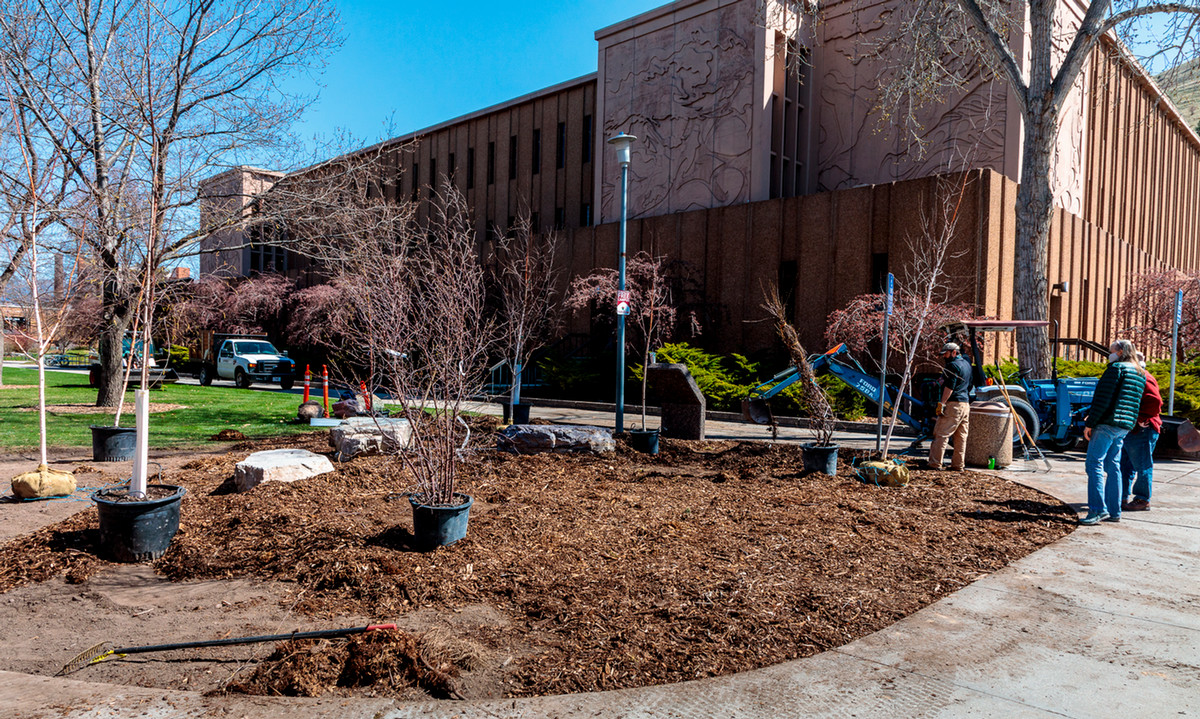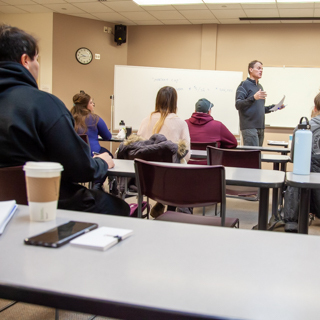Water
Storm Water
UM is an important community partner when it comes to protecting the health of our river, the Clark Fork, from various pollutants.
To learn more about how to protect the Clark Fork from pollutants, visit UM's storm water management page!
Drinking Water Health
Many of UM's buildings are old enough to have lead pipes, but based on annual testing of campus water quality from sinks and fountains, lead levels are well within safe ranges. When water sits in pipes for an extended period of time, the levels of lead tend to be higher than with water that has been more recently circulated. If you are concerned about the levels of lead in the water you are consuming on campus, let the water run for a moment until it is cold. This will ensure that it hasn't been sitting in the pipes for very long.
Water Conservation
The Missoula Aquifer has always been a wildcard. All of Missoula's water sources come from the aquifer making it the "motherload of all aquifers". Because of this, extensive research has been done to determine exactly how much water flows in and out of the aquifer every year. In the 1990s, the University of Montana and the City of Missoula banded together to fund research by a UM graduate student to answer this particular question. According to this research, anywhere from 220,000 and 250,000 acre-feet of water goes into the aquifer with 80% of it coming from the Clark Fork River, which is roughly the same amount that went back into the Clark Fork every year. That's a lot of water!
Read the original study done by Ross Miller and see the most recent news coming out still involving information from his research.
Stay tuned as we find more information on this topic!
Stay tuned as we find more information on this topic!
Since the creation of the Kless Sustainability Fund, two approved projects promoting sustainability at UM have involved irrigation!
2017: Turner Sprinkler Automation
This project entailed coordinating with an outside contractor to dig up and install an automated coupler system over the summer. Facility Services reached out to a specific contractor who has done the majority of the university sprinkler systems over the last five years, including the oval. Facility services and this outside contractor worked together to assist UM in plumbing, electrical, and groundskeeping work
2021: West Mansfield Irrigation System

Prior to installing an irrigation automation system near the Mansfield Library, one of the most common complaints the Sustainability Department received was the overspray of irrigation water onto paved areas, especially sidewalks. To reduce the amount of water applied to the lawn, reduce the amount of water wasted due to evaporation and over-spray, and reduce student-sprinkler conflicts, Kless Sustainability Funds were used to install an automated irrigation system. The yearly water savings from this upgrade amount to over 116,000 gallons! There is also the potential for an increase in the area’s trees’ ability to sequester carbon due to more appropriate and uniform watering. While the irrigation system was being installed, the opportunity to plant more trees was taken, further enhancing carbon sequestration and evaporation reduction potential.
Visit this link to learn more about all the projects at UM that have been funded by Kless Sustainability!
